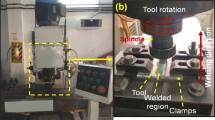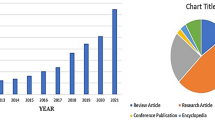Abstract
Reduction of weight and increase of corrosion resistance are among the advantageous applications of aluminum alloys in automotive industry. Producing complicated components with several parts as a uniform part not only increases their strength but also decreases the production sequences and costs. However, achieving this purpose requires sufficient formability of the material. Tube hydroforming is an alternative process to produce complex products. In this process, the higher the material formability the more uniform will be the thickness distribution. In this research, tube hydroforming of aluminum alloy (AA1050) at various temperatures has been investigated numerically to study temperature effect on thickness distribution of final product. Also a warm hydroforming set-up has been designed and manufactured to evaluate numerical results. According to numerical and experimental results in the case of free bulging, unlike the constrained bulging, increase of the process temperature causes more uniform thickness distribution and therefore increases the material formability.

















Similar content being viewed by others

References
F. Vollstern, T. Prange, and M. Sander, 1999. Hydroforming: needs, developments and perspectives, Proceedings of the Sixth ICTP. 19–24, p 1197–1210
B.J. Kim, C.J. Van Tyne, M.Y. Lee, and Y.H. Moon, Finite Element Analysis and Experimental Confirmation of Warm Hydroforming Process for Aluminum Alloy, J. Mater. Process. Technol., 2007, 187-188, p 296–299
M.Y. Lee, S.M. Sohn, and ChY Kang, Effects of Pre-treatment Conditions on Warm Hydroformability of 7075 Aluminum Tubes, J. Mater. Process. Technol., 2004, 155–156, p 1337–1343
Sh Yuan, J. Qi, and Z. He, An Experimental Investigation into the Formability of Hydroforming 5A02 Al-Tubes at Elevated Temperature, J. Mater. Process. Technol., 2006, 177, p 680–683
H.K. Yi, E.J. Pavlina, C.J. Van Tyne, and Y.H. Moon, Application of a Combined Heating System for the Warm Hydroforming of Lightweight Alloy Tubes, J. Mater. Process. Technol., 2008, 203, p 532–536
Z. He, S. Yuan, G. Liu, J. Wu, and W. Cha, Formability Testing of AZ31B Magnesium Alloy Tube at Elevated Temperature, J. Mater. Process. Technol., 2010, 210, p 877–884
MSC.Marc Mentat help, 2010, Volume B: Element Library, p 644–645
T. Altan, S. Jirathearanat, and M. Strano, Adaptive FEM Process Simulation for Hydroforming Tubes, Proceedings of the International Conference on Hydroforming, Fellbach-Stuttgart, Germany, 2001
Author information
Authors and Affiliations
Corresponding author
Rights and permissions
About this article
Cite this article
Hashemi, S.J., Moslemi Naeini, H., Liaghat, G. et al. Numerical and Experimental Investigation of Temperature Effect on Thickness Distribution in Warm Hydroforming of Aluminum Tubes. J. of Materi Eng and Perform 22, 57–63 (2013). https://doi.org/10.1007/s11665-012-0213-4
Received:
Revised:
Published:
Issue Date:
DOI: https://doi.org/10.1007/s11665-012-0213-4



